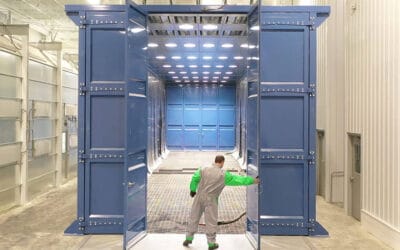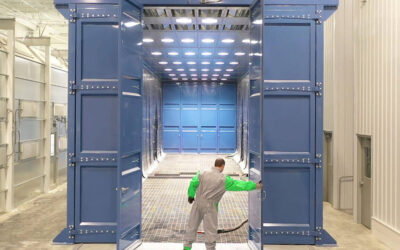How to Reduce Dust and Debris When Media Blasting
Blast cabinets are known to generate a lot of excessive dust and there are several reasons why this occurs.
Too much dust and debris create poor visibility. Fortunately, there are many ways to reduce dust and debris when media blasting. This article will discuss a few of them.
With the dangers to the atmosphere that are associated with media blasting, dust control methods, and tough environmental regulations are vastly crucial to guarantee the retention and recovery of the emissions discharged. A few of these methods include:
- Blast enclosures
- Vacuum blasters
- Wet blasting
- Water curtains
- Centrifuge blasters
Blast Enclosures
A blast enclosure does just that: it encloses a media blast job in a box-like structure so the airborne particulates can’t get into the atmosphere. In most blast enclosures, a dust collection or ventilation unit is in place to eliminate the dust from the air before the blasting work is completed.
Blast enclosures are highly efficient in collecting and recapturing the particle emissions created by abrasive blasting. The result is only a tiny amount of debris is emitted in the blast enclosure.
Vacuum Blasters
Vacuum blasters function like vacuums, using them to suck in any particles released into the air. A capture and collection system that surrounds the blast nozzle stores these emissions, allowing the collected abrasives to be reused.
Water Curtains
Using water curtains to decrease dust and debris entails installing nozzles around the blasting surface. The downward nozzle spray creates a water curtain that collects the debris from the blasting work.
The debris and the water are collected in water troughs and afterward, the abrasives go into the right container for disposal. Water curtains are a good way to reduce particle discharges during a media blasting job, where processing is occurring outside a blast room.
Wet Blasting
Wet blasting consists of numerous methods including:
- High-pressure water blasting
- Water abrasive blasting
- Wet abrasive blasting
- High-pressure water and abrasive blasting
This control method works by adding water to the blasting nozzle, combining the abrasives and the water. This mixture catches the dust immediately, keeping it from affecting the atmosphere and the technician.
Centrifugal Blasters
A centrifugal blaster uses a fast-moving blade that thrusts abrasives against the surface of whatever is being cleaned. A collection system recycles the abrasives, allowing only a small amount of debris to escape. These blasters are frequently used on flat, huge horizontal structures like boat decks. The small-size, hand-held centrifugal blasters are used on bridges and other similar structures.
Contact Us to Find Out More About Dust and Debris Control Methods
With the damage that excessive dust and debris can create, it’s vital to employ a media blasting pollution preventative measure to keep the earth green and the air pure.
Reach out to us if you have any more questions about dust and debris control processes. We have been the top provider of media blast solutions since 1967, producing top-quality media blast equipment and solutions that make finishes gleam. Get your questions answered today.




